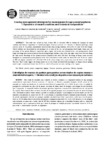Use este identificador para citar ou linkar para este item:
http://www.alice.cnptia.embrapa.br/alice/handle/doc/504050Registro completo de metadados
| Campo DC | Valor | Idioma |
|---|---|---|
| dc.contributor.author | ANDRADE, C. M. S. de | pt_BR |
| dc.contributor.author | GARCIA, R. | pt_BR |
| dc.contributor.author | VALENTIM, J. F. | pt_BR |
| dc.contributor.author | PEREIRA, O. G. | pt_BR |
| dc.date.accessioned | 2011-04-10T11:11:11Z | pt_BR |
| dc.date.available | 2011-04-10T11:11:11Z | pt_BR |
| dc.date.created | 2006-04-17 | pt_BR |
| dc.date.issued | 2006 | pt_BR |
| dc.identifier.citation | Revista Brasileira de Zootecnia, Viçosa, MG, v. 35, n. 2, p. 334-342, 2006. | pt_BR |
| dc.identifier.issn | 1806-9290 (online) | pt_BR |
| dc.identifier.uri | http://www.alice.cnptia.embrapa.br/alice/handle/doc/504050 | pt_BR |
| dc.description | This study was carried out from October 2002 to December 2003 to evaluate the dynamics of sward condition and botanical composition of a mixed massaigrass (Panicum maximum x P. infestum, cv. Massai) and forage peanut (Arachis pintoi Ac 01) pasture, intermittently stocked at three daily herbage allowance levels (9.0, 14.5 and 18.4% live weight). Sward condition was characterized in each grazing cycle in terms of the pre- and post-grazing sward height, forage mass and percentage of bare ground. Botanical composition (grass, legume and weeds) was evaluated before each grazing period. Sward height and forage mass increased linearly with increasing herbage allowance (HA) levels, and higher values were observed during the rainy season. Percentage of bare ground increased primarily at the lowest HA level. Percentage of forage peanut increased throughout the experimental period, primarily in the barest and shortest swards, under the lowest HA level. In the last quarter of 2003 the legume constituted 23.5, 10.6 and 6.4% of the pasture forage mass, respectively, from the lowest to the highest HA level. These results suggest that forage peanut can be successfully associated with massaigrass, as long as the pre-grazing sward height is maintained shorter than 65-70 cm, which will prevent excessive shading to the legume. | pt_BR |
| dc.language.iso | eng | eng |
| dc.rights | openAccess | eng |
| dc.subject | Capim massai | pt_BR |
| dc.subject | Mixed massaigrass | pt_BR |
| dc.subject | Panicum maximum x P infestum cv Massai | pt_BR |
| dc.subject | Amendoim forrageiro | pt_BR |
| dc.subject | Forage peanut | pt_BR |
| dc.subject | Amazônia Ocidental | pt_BR |
| dc.subject | Amazonia occidental | pt_BR |
| dc.subject | Híbridos | pt_BR |
| dc.subject | Leguminosas forrajeras | pt_BR |
| dc.subject | Pastoreo de rotación | pt_BR |
| dc.subject | Pastoreo mixto | pt_BR |
| dc.subject | Western amazon | pt_BR |
| dc.subject | Competición vegetal | pt_BR |
| dc.subject | Composición botánica | pt_BR |
| dc.title | Grazing management strategies for massaigrass-forage peanut pastures. 1. Dynamics of sward conditions and botanical composition. | pt_BR |
| dc.type | Artigo de periódico | pt_BR |
| dc.date.updated | 2019-01-07T11:11:11Z | pt_BR |
| dc.subject.thesagro | Pastagem consorciada | pt_BR |
| dc.subject.thesagro | Leguminosa forrageira | pt_BR |
| dc.subject.thesagro | Híbrido | pt_BR |
| dc.subject.thesagro | Pastejo rotativo | pt_BR |
| dc.subject.thesagro | Composição botânica | pt_BR |
| dc.subject.nalthesaurus | Mixed grazing | pt_BR |
| dc.subject.nalthesaurus | Forage legumes | pt_BR |
| dc.subject.nalthesaurus | Hybrids | pt_BR |
| dc.subject.nalthesaurus | Rotational grazing | pt_BR |
| dc.subject.nalthesaurus | Botanical composition | pt_BR |
| dc.subject.nalthesaurus | Plant competition | pt_BR |
| dc.subject.nalthesaurus | Arachis pintoi | pt_BR |
| riaa.ainfo.id | 504050 | pt_BR |
| riaa.ainfo.lastupdate | 2019-01-07 -02:00:00 | pt_BR |
| dc.identifier.doi | 10.1590/S1516-35982006000200002. | pt_BR |
| dc.contributor.institution | CARLOS MAURICIO SOARES DE ANDRADE, CPAF-AC; Rasmo Garcia, UFV; JUDSON FERREIRA VALENTIM, CPAF-AC; Odilon Gomes Pereira, UFV. | pt_BR |
| Aparece nas coleções: | Artigo em periódico indexado (CPAF-AC)  | |
Arquivos associados a este item:
| Arquivo | Descrição | Tamanho | Formato | |
|---|---|---|---|---|
| 12925.pdf | 229.53 kB | Adobe PDF |  Visualizar/Abrir |









